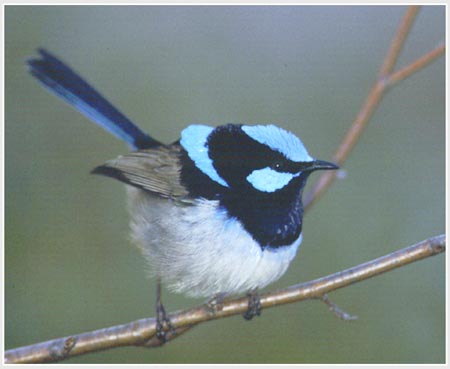Birds know the language of other species
Australian scientists have conducted a series of experiments and concluded that birds can recognize the meaning of cries from different species.
When a bird detects hawks and makes an alarm, many other birds with it rush to fly to find cover. The ornithologists want to find out if the ability to learn the alarming language of other species is ' programmed ' in the bird's brain or as a result of a learning process.
Australian National University ecologists claim that the warning calls of other species are one of the things birds can learn. They went to nature reserves with live wolves, then played a video recording of the alarms of many other birds and followed its reaction. After a few minutes, they noticed that the blue-feathered wren flew away after hearing the white sirens' alarm sound.
The blue and white eyebrows have the same alarm sound (high pitch). Therefore, the blue-eared head easily recognized the alarm signal of the white eyebrow and vice versa.

Green feathered (Photo: anu.edu.au)
But while the two species of wren live together in Canberra, in the Macquarie Marshes nature reserve in New South Wales, only the blue feathered red is seen. When the expert group gave an alarming sound of many birds here, the blue-feathered wren flew only after hearing their own cries and made no moves when they heard the alarm of other species.
According to Robert Magrath, the leader of the study, this shows that the ability to recognize the cry of other birds is not available, but only after a learning process .
In another experiment, the scientists found that the blue feather in Canberra also fluttered when it heard the alarming sound of the bile bird. These two species live together in a habitat. The alarming sound of the bastard bird has a low pitch and a rapid decrease in intensity, in stark contrast to the alarm of the blue-haired wrenches. 'It shows that they can recognize sounds that are different from their cries,' Robert said.
The findings of Australian scientists suggest that conservationists should let the birds living in captive environments hear the alarms of local birds before releasing them to nature.
- Human language derives from the song of apes and birds
- How does the new 'language' bird learn?
- The flock of birds appears in Lao Cai as a swallow
- 10 most beautiful birds on the planet
- Ask easy, difficult to answer: Why do birds sing?
- Four-winged dinosaurs have relatives with birds?
- Migratory birds learn
- Birds also have mafia
- 10 species of birds have beautiful long tail feathers
- Programming language history
- Unbelievable findings: Bee species have a local language
- Bird language helps patients recover quickly
 Animal 'suffering' after hibernation
Animal 'suffering' after hibernation Why do goats climb well?
Why do goats climb well? Scientists were surprised to see chimpanzees eating turtles
Scientists were surprised to see chimpanzees eating turtles Giant catfish died deadly due to drought in Thailand
Giant catfish died deadly due to drought in Thailand